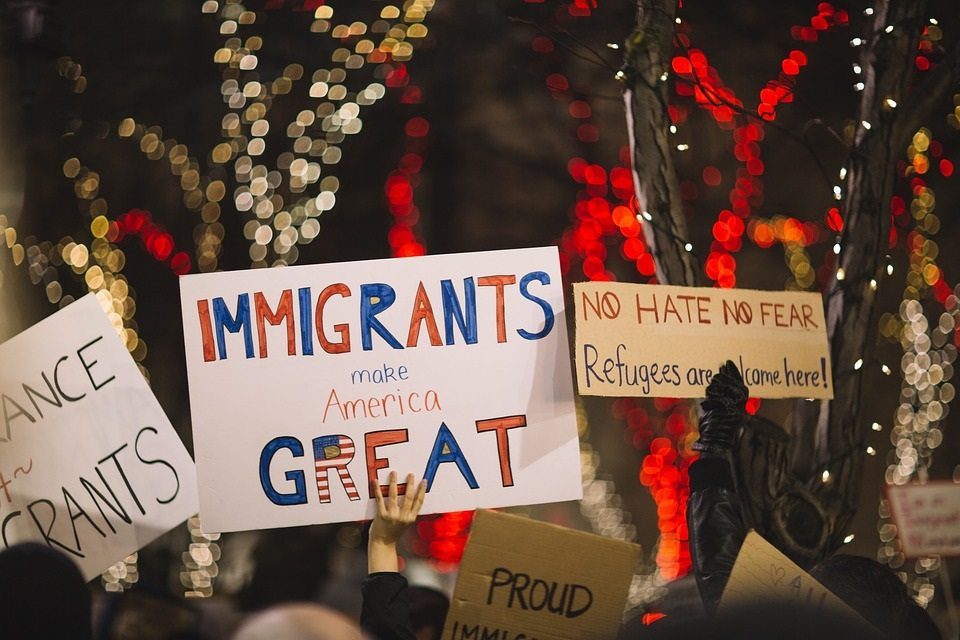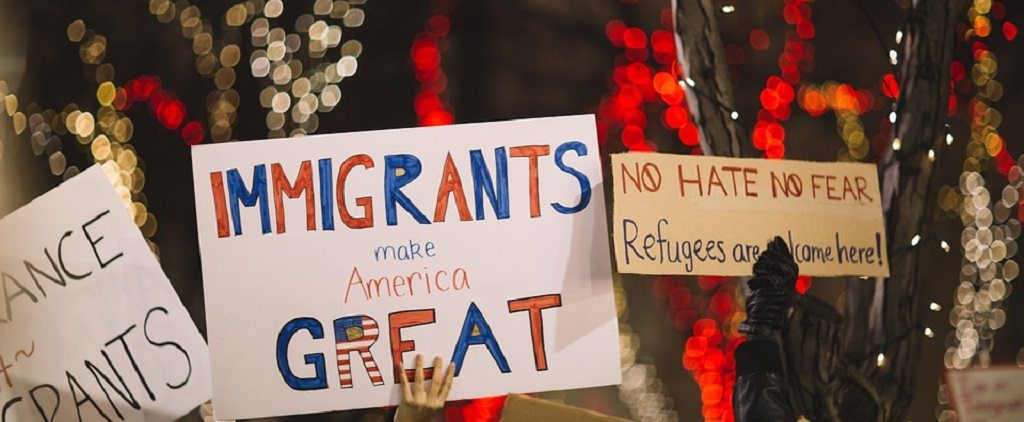[dropcap style=”font-size:100px; color:#992211;”]T[/dropcap]hose big state colleges in the USA, where the demand is high and the entry requirements are stellar, tend to stage more protests calling for inclusive campuses.
It’s almost as if the cleverer people are, the less likely they are to be xenophobic, racist, discriminatory bigots. Gosh.
Some universities are more likely than others to experience student activism like the “I, Too, Am Harvard” campaign in 2014, a new study finds.
That student-led campaign at Harvard publicized the hurtful experiences routinely faced on campus by students from marginalized populations, meaning gender and ethnic minorities.
A new study led by a researcher from Southern Methodist University, Dallas, found that students are more likely to initiate social justice campaigns like the one at Harvard at large, selective, public universities where there are fewer students receiving financial aid.
The study is one of the first to take an empirical look at the institutional characteristics of universities in an effort to understand the current spike in student-led activism.
“Interestingly, our quantitative analysis found that numerical student diversity — in terms of gender and race — was not sufficient to make students feel they attend school on an inclusive campus,” said Dominique Baker, lead author on the research and assistant professor of higher education at SMU’s Simmons School of Education and Human Development.
“Our study found that more selective institutions, larger institutions, and institutions with fewer students receiving the Federal Pell Grant had greater odds of students adopting social justice campaigns to heighten awareness of their plight,” Baker said.
The federal government awards Pell grants to undergraduate students who need financial assistance for college.
Eradicating student protests isn’t the goal of the new research study, Baker said. Universities are seeing one of the largest jumps in student activism since the 1960s, so the goal is to provide data-based empirical research to help universities improve the campus environment for minority students.
“We are more concerned with what leads to protest and collective action — and which environments are conducive to it,” Baker said. “This research project helps us understand the kinds of contexts in which students may feel compelled and able to act. That may help us think about the ways in which we can best support our students and create more inclusive spaces.”
Co-author of the study is Richard Blissett, an assistant professor in Seton Hall University’s department of education. The researchers reported their findings in The Journal of Higher Education in the article “Beyond the Incident: Institutional Predictors of Student Collective Action.”
Students across the country are fighting for inclusion and justice
The issue is a growing one. Recently, more than 70 U.S. universities have faced questions about how to address student protest demands regarding a variety of social injustices, such as police brutality, racism, and gender disparity, among others, the authors say.
At least 40 U.S. universities have had some sort of “I, Too, Am” campaign.
Studies from decades past that looked at student activism found that social  movements and student protests during the 1960s and 1970s took place at more cosmopolitan and prestigious universities on both coasts, as well as some major public universities in between and some progressive liberal arts colleges.
movements and student protests during the 1960s and 1970s took place at more cosmopolitan and prestigious universities on both coasts, as well as some major public universities in between and some progressive liberal arts colleges.
With their new study, Baker and Blissett wanted to see if that holds true now. They looked at whether certain types of U.S. institutions were more likely to see student activism than others.
Numerical diversity is not enough for students to feel a campus is inclusive
The “I, Too, Am Harvard” movement began as a student play and evolved into a photo campaign. For the play and photos, 63 Harvard students held up dry-erase boards on which they wrote examples of racist things that had been said to them, as well as things they would like to say to their peers in response. The photos were published on Tumblr, then went viral on the social news website BuzzFeed. Ultimately that sparked many similarly named movements on other U.S. campuses.
For their study, Baker and Blissett analyzed 1,845 institutions, including those with publicized “I, Too, Am” campaigns. They linked the information with five-years of institution-level data from the U.S. Department of Education on all four-year public and not-for-profit universities.
The researchers also collected various measures of student diversity at each university, including gender and undergraduate racial identity, as well as Pell Grant recipients to capture low-income backgrounds.
They investigated whether the current state of diversity, or recent changes to it, could predict where an “I, Too, Am” campaign would appear. They found no consistent evidence that racial diversity was predictive of a campaign, suggesting diversity alone may not be enough to address student dissatisfaction, the authors said.
“Colleges focusing solely on the number of marginalized students may miss other characteristics of the institutions that could be associated with student mobilization or discontent,” Baker said.
Institutions without campaigns may also have inclusion issues
The researchers found that the 40 institutions with social movements were generally more selective in their admission policies, more socially prestigious, and primarily in the Mideast.
This prompted the researchers to pose the question, “What social resources are required for people to be able to protest in the first place?” Baker said. “This could explain why some institutions have campaigns and some do not. We are continuing in our work to investigate some of these types of questions.”
The results have important implications, said co-author Blissett, suggesting that student expressions of dissatisfaction with institutional racism may not be, as some theories describe, “idiosyncratic overflows of emotion,” but instead a function of the institutional environment.
“We are adding to a growing base of literature that suggests that thinking beyond diversity as reflected in enrollment numbers may be important for institutions that want to ensure that their minority students can thrive, and feel safe and at home on campus,” he said.
That said, just because an institution hasn’t had a student-led campaign does not necessarily mean that the institution doesn’t have social justice problems related to gender and race.
The research findings can help campus leadership see student protests as a key source of political information. The findings suggest that the higher education community can seek ways to create supportive spaces that make campuses feel more inclusive so students are less likely to feel compelled to protest the environment, Baker said.
“We’re not saying that the presence of racial and ethnic minorities or women is not important,” she said. “Our main conclusion from this research is that a focus on forms of diversity and inclusion beyond only enrollment numbers may also be important. Institutions may want to think more holistically about the challenges that these students are facing on their campuses.”
Source: Eurekalert/Southern Methodist University
Image: Pixabay/Stocksnaps
Phil Rockstroh is a poet, lyricist and philosopher bard living in New York City.
Yet a bio amounts to dharma for dimwits: It defines a human being in the same manner and degree of veracity as a restaurant menu describes the various slabs of meat offered … commodified things that were once living beings.





















